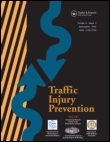
Modeling road safety development is a complex task, which needs to consider both the quantifiable impact of specific parameters, as well as the underlying trends that cannot always be measured or observed.
Objective: The objective of this research is to apply structural time series models for obtaining reliable medium- to long-term forecasts of road traffic fatality risk, using data from five countries with different characteristics from all over Europe (Cyprus, Greece, Hungary, Norway and Switzerland).
Methods: Two structural time series models are considered: (i) the local linear trend model and the (ii) latent risk time-series model. Furthermore, a structured decision tree for the selection of the applicable model for each situation (developed within the ‘DaCoTA’ research project, co-funded by the European Commission) is outlined. First, the fatality and exposure data that are used for the development of the models are presented and explored. Then, the modeling process is presented, including the model selection process, the introduction of intervention variables and the development of mobility scenarios.
Results: The forecasts using the developed models appear to be realistic and within acceptable confidence intervals. The proposed methodology is proved to be very efficient for handling different cases of data availability and quality, providing an appropriate alternative from the family of structural time series models in each country.
Conclusions: A concluding section providing perspectives and directions for future research is finally presented.
| ID | pj86 |
| Manuscript | |
| DOI | |
| Tags | accident analysis, international comparisons, machine learning, statistical modelling |







